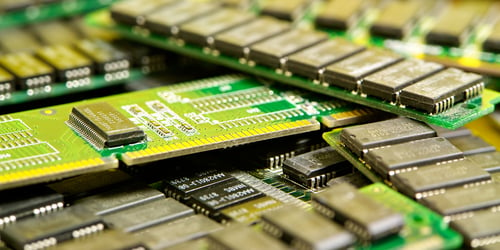In the realm of server memory, there are several types of modules available to meet the diverse needs of different systems.
Three commonly used memory module technologies are UDIMM, RDIMM, and LRDIMM. Each of these acronyms represents a distinct memory module type with specific characteristics and capabilities. In this blog post, we will delve into the differences between UDIMM, RDIMM, and LRDIMM to help you understand their unique features and choose the right memory module for your system.
Unraveling UDIMM
UDIMM, short for Unbuffered DIMM, is the most basic and straightforward memory module type. It is commonly found in consumer-grade systems and offers simplicity and cost‑effectiveness. UDIMMs are designed to be plug-and-play and are suitable for systems that prioritize lower cost over advanced features and performance. However, UDIMMs have limited capacity and do not support certain advanced features like error correction. Shop UDIMM Memory
Exploring RDIMM
RDIMM, or Registered DIMM, is a step up from UDIMMs in terms of performance and capacity. RDIMMs utilize an additional hardware component called a register or buffer. This register isolates the memory modules from the memory controller, allowing for greater capacity and increased reliability. RDIMMs offer higher memory densities and can handle larger amounts of data, making them suitable for applications that demand robust performance and the ability to manage heavy workloads. They also support advanced features such as error correction, which helps detect and correct memory errors. Shop RDIMM Memory
Unveiling LRDIMM
LRDIMM, which stands for Load-Reduced DIMM, represents the most advanced memory module technology among the three. LRDIMMs take the benefits of RDIMMs even further by implementing an additional buffer known as an advanced memory buffer (AMB). This buffer minimizes the electrical load on the memory bus, allowing for increased capacity and improved performance. LRDIMMs offer the highest memory density and are designed to handle extremely demanding workloads, making them suitable for enterprise-grade servers, high-performance computing, and virtualization applications. Shop LRDIMM Memory
Comparing the Key Differences
Conclusion
In conclusion, choosing the right memory module type for your system depends on your specific workload requirements and budget. UDIMMs are suitable for consumer-grade systems with basic needs, while RDIMMs and LRDIMMs provide improved performance and error correction for more demanding applications and enterprise-level workloads. By understanding the differences between RDIMM, UDIMM, and LRDIMM, you can make an informed decision when selecting memory modules, ensuring optimal performance and reliability for your computing needs.

